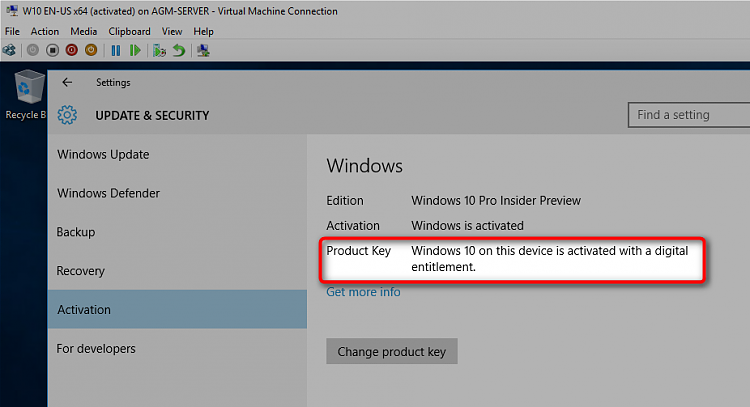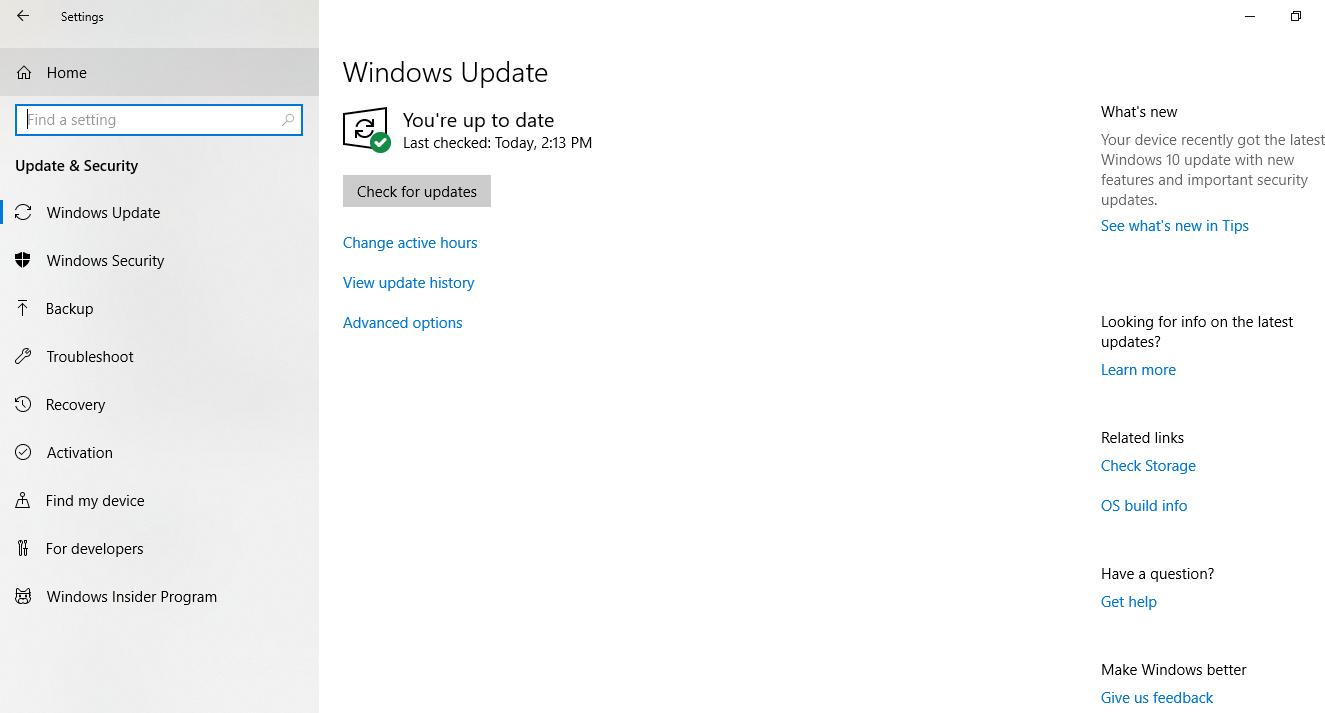Dell Windows 10 Activation
It use to be, with Windows 8, 7 and XP, that I could clone a computer to and identical Dell computer and the newly cloned computer would sense it was still on a Dell and not bother to activate. I am sure this is because the OS was installed with a Dell OEM SLP media.Now, with Windows 10, it looks like Dell no longer has OEM SLP media. It uses the retail media (TH2) which basically does the same thing. When installing from ground zero it will look in to the BIOS to find the product and install accordingly. The difference being that now when I clone a computer the new computer will lose it's activation and demand a product key. It is still in the BIOS but I guess it isn't looking.Does anyone have any experience cloning Windows 10 on a Dell and getting by the activation? It isn't black and white.

Aug 16, 2018 This tutorial will walk you through the steps of how to resolve the following error alert: 'This product key doesn't work. You might need to get in touch wit.
For the record I am legal on both computers. I have purchased Professional on both. 'Getting around activation' was probably not the term I should have used. Anyway.I did find the solution. Doki doki literature good ending. I used OEMKey to pull the product key out of the BIOS on the new computer.
Went in to Control Panel and 'Activate Windows'. Plugged in the Product Key from the BIOS and it activated.I am going to guess now that this computer has been registered with Microsoft I could clone it a second time and it won't ask. I am just not that bored today:). @McKnif: while I don't disagree, given the circumstances described at the time (and now later) it is pretty black and white.

You can never use OEM media to build an image. While not every machine needs to have a VL license assigned, VL media (and keys) must always be used. The original post was clearly using OEM media, and the follow-up reaffirms this.@lockdown: my interpretation right now is that you are NOT legal. Yes, both machines are OEM. But the way you cloned is still illegal and even a basic audit will catch this. The fines can be enormous. Fair warning.
Cliff I am going to have to point out that no where in my original question or anywhere there after did I say I was using OEM media. I actually said just the opposite. That Dell no longer has OEM SLP media for Windows 10 and I had to install with Retail TH2.I am also going to guess I won't be prompted because this is what you had to do with the initial release of Windows 10. You first had to install Windows 7 or 8 and then do an online upgrade. This would register the hardware and Windows 10 with Microsoft. Than I could put in the Retail Windows 10 CD and skip entering a product key.
During the install it would communicate with Microsoft's Server and see that the hardware and Windows 10 were already registered on this computer and I would never have to put in a product key.In response to John comment each computer has its own individual product key. After copying one Windows 10 to the other I than put in the correct product key that belonged to the destination computer.For grins I might try re-cloning it and see but my main concern has been addressed to it might be a while until I get around to it. I could go into details about how Microsoft has changed windows deployments over the years. How WIM files.are. images. How windows 10 now has 'provisioning packages' for OEM and IT Pro customization options. And how Dell can now ship 'generic' media because of this, but the media is still considered OEM.
Dell Backup And Recovery Windows 10 Activation Code
It is.not. retail nor is it VL. And how licensing is still a legal document, and a legal contract. But instead of writing a paragraph on each of those, I suppose you've made up your mind.
I still strongly believe what you are doing is illegal and it will bite you.There is no benefit to 'cloning' unless you are customizing an image. And if you are customizing, that requires volume licensing rights. That's the point.
Because of how windows is deployed these days, a 'standard' image is exactly that, still an image, so cloning without customization has zero benefit. So the only reason to clone is to take advantage of VL rights (customization) or to break the law.
IT really is that simple froma legal perspective. There are several advantages to cloning (BTW I do not use WMI).
The two biggest being drivers and updates. Windows 7 now has upwards of 200 updates from the original installation. Then you throw in drivers, Acrobat Reader, Java, etc. Cloning can save you hours just on a generic installation let alone a custom installation. Dell doesn't ship any media with their computers any more. I shouldn't really say that but the Windows 10 media they do ship isn't really describable.I am sure what you say has a lot of merit but the only way to be sure would be to hire a lawyer and I am sure even than it would go in to years and years of litigation.
Here is the way I look at it. I paid Microsoft (actually Dell) for Windows 10 Professional. I paid them what they asked. I am not trying to beat them out of their money. Not only did I pay them for Windows 10 Professional but I activated it with the Product Key that came with the computer. I could not be any more legit nor should Microsoft expect me to be.
How Windows 10 Professional physically got on that computer, in my opinion, is moot. Let me be clear on this - Microsoft's licensing and reimaging rights DO NOT PERMIT end users to create customized images from OEM or Retail media - ONLY - repeat ONLY from Volume License Media. If you were using Volume License media, you wouldn't be asking about keys - since volume license installs ALL use the same key assigned to you.
In fact, that's part of the reason VL media is REQUIRED.You only need a SINGLE volume license that matches the edition of the license sold with the system (meaning, if you have 100 Windows 10 Pro new systems and you want to image, you only need ONE copy of Windows 10 Pro Volume and you can redeploy that one copy to all systems that were purchased with Windows 10 Pro) so before you start thinking you have to go buy 100 copies and there's no way your going to do that, stop. You only need to buy ONE copy (and 4 Rental Rights (at about $5 each).IF. you don't have an preexisting active VL Agreement to piggyback on to).So doing this legally - and properly - for 100 systems costs at most $200 in licensing fees. And heck, you even get a license that will upgrade a pre-existing Windows 7 or 8 system to 10!Further, you cannot clone (or as you've described, the proper term is image) a system and have it in a supportable state unless UNLESS you sysprep it PRIOR to sealing the image and capturing it. It doesn't matter if you overpay for the process with Acronis, Ghost, or any other third party - or if you use Windows Deployment Services/Server. You MUST sysprep BEFORE copying the reference system.I don't know what you're doing, but from the comments you made it sounds VERY MUCH like you not doing this properly and potentially putting yourself and your company in a precarious legal situation.

Understand that for windows 10 from oem the key is stored in the BIOS'Dell keys are stored in the BIOS, as long as you use OEM install media, it will activate'now i have 5 Dell pc of the same model and hardware configuration, i did the os configuration for 1 pc, cloned the image using marcium and restore over to the other 4 pc, but i realized the the windows can't be activated. Only if i use the oem media then the OS can be activated. Is there any work around for this? Cos it doesnt make sense for me to reconfigure all the windows account one by one for each pc, which involves alot of work as i made alot changes to the os policy settings too. OEM Windows licenses are not stored in a machine's BIOS, they are stored in the ACPI table, which while related (since the table is accessible within the firmware) it actually is not a machine's firmware.
Unlike previous versions of Windows, there is not a difference between a Retail and OEM Windows 10 image, Windows 10 will install and activate provided the license key and the image edition matches. As for the activation status of multiple OEM machines, using a custom image, that can be automated with a script. Your activation problems likely are connect to the image build process you used–Apr 17 at 15:58.